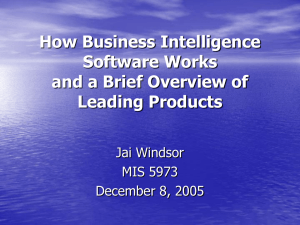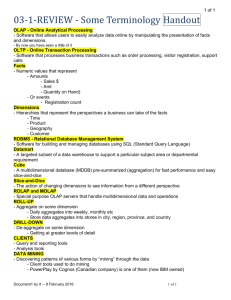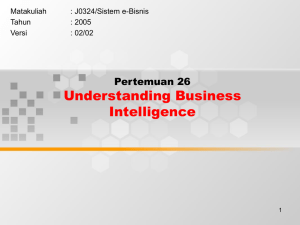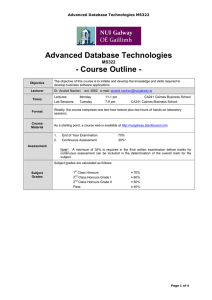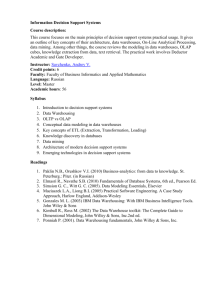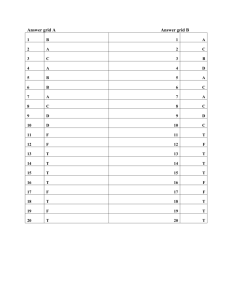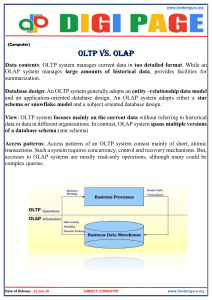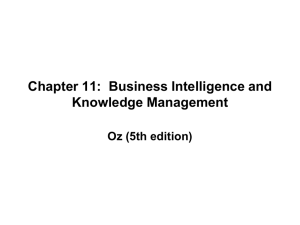Week 5 – Notes - Temple Fox MIS
advertisement
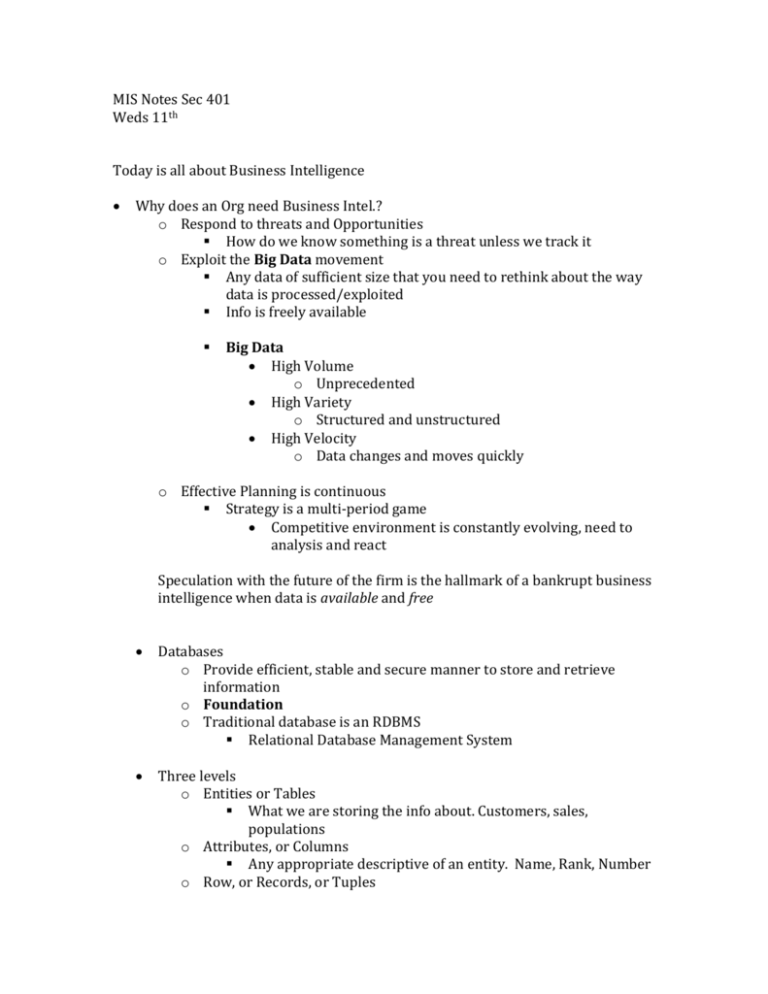
MIS Notes Sec 401 Weds 11th Today is all about Business Intelligence Why does an Org need Business Intel.? o Respond to threats and Opportunities How do we know something is a threat unless we track it o Exploit the Big Data movement Any data of sufficient size that you need to rethink about the way data is processed/exploited Info is freely available Big Data High Volume o Unprecedented High Variety o Structured and unstructured High Velocity o Data changes and moves quickly o Effective Planning is continuous Strategy is a multi-period game Competitive environment is constantly evolving, need to analysis and react Speculation with the future of the firm is the hallmark of a bankrupt business intelligence when data is available and free Databases o Provide efficient, stable and secure manner to store and retrieve information o Foundation o Traditional database is an RDBMS Relational Database Management System Three levels o Entities or Tables What we are storing the info about. Customers, sales, populations o Attributes, or Columns Any appropriate descriptive of an entity. Name, Rank, Number o Row, or Records, or Tuples The actual data that you are storing. “Greenwood” “MIS” “tuID” o We do it this way because things were originally done with Giant Lists Flat files Hard to update NORMALIZATION How do we manage these data o Data resides in the database The “myfirm” database o A database is on the server Server is a power machine with lots of memort\y/storage The data manipulation is done through database engine o SQL server, Oracle o The language we use to speak to the to the database is SQL Structured Query Language SQL o SQL is simplest language Four Commands Select –--- Retrieve data Alter—----Change the data Update- -- Change the data itself Drop ----- Get rid of data Benefits? o Enable interactive websites LOOOK AT SLIDES FOR THIS Databases and Data Warehouse And DATA MARTS Databases and Data Models and Data warehouses Data Warehousing and Data Marts Hypercube Create multidimensional cube of info that summarize transactional data across a verity of dimensions. A HYPERCube is is small one OLAP vs OLTP Online analytical Process --- Online transactional processing ~~~~Extended Scenario ~~~~~~~$200 Million tied up in inventory ~~~~Spend $1 million on new system to safely reduce inventory levels 10%\ ~~~ New System would actually be a better job at reducing “stock outs” ~~~~~~~~Use that $20 million to put more salespeople out in the field ~~~~What could your organization do with that $20 million?? o Business Intelligence Components o Three types of tools Information and knowledge discovery Business Analytics o Info visualization o Info and Knowledge Discovery o Search for hidden relationships o Hypotheses are tested against other models OLAP This is where the HYPER CUBES go to o Regression o OLAP Server- Main OLAP Component- Stores/holds HYPERCUBES o Measures and dimensions o Cubes slicing dicing o Data managing o Cube o An OLAP data structure organizing data via multiple dimensions o Cubes can have any number of dimensions Be careful most people cant comprehend after 3 dimensions o Data Mining o Uncovering hidden relationship. Used for discovering ‘hidden” predictive relationships in the data Patterns, trends, rules o Example identification of profitable customer segments or fraud detection o Any predictive models should be tested against “fresh” data o Data mining algorithms are run against large data warehouses Data reduction helps to reduce the complexity of data and speed up analysis Textual Analysis Benefits o Marketing- Learn about customers thoughts feelings and emotions. o Operations- you can learn about product performance by analyzing service records or customer calls o Strategy- Gather competitive analyses Web Usage Mining o Used by organizations such as Amazon.com See slide for WEB USAGE INFO Business Analytics o BI apps to support human and automated decision-making. DSS o Decision making support for recurring problems o Used by managers o Interactive decision aid What if analysis o Analyze results hypothetical changes
